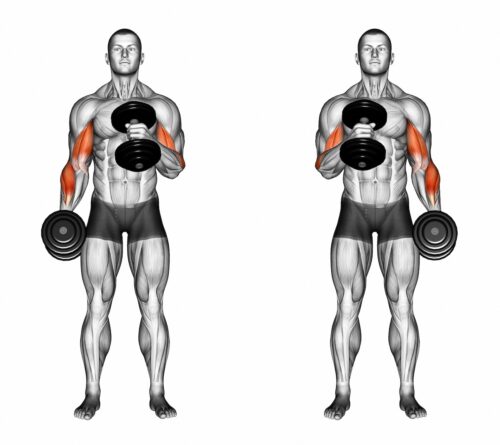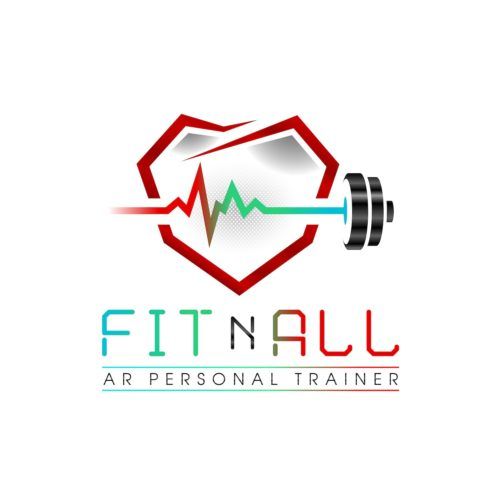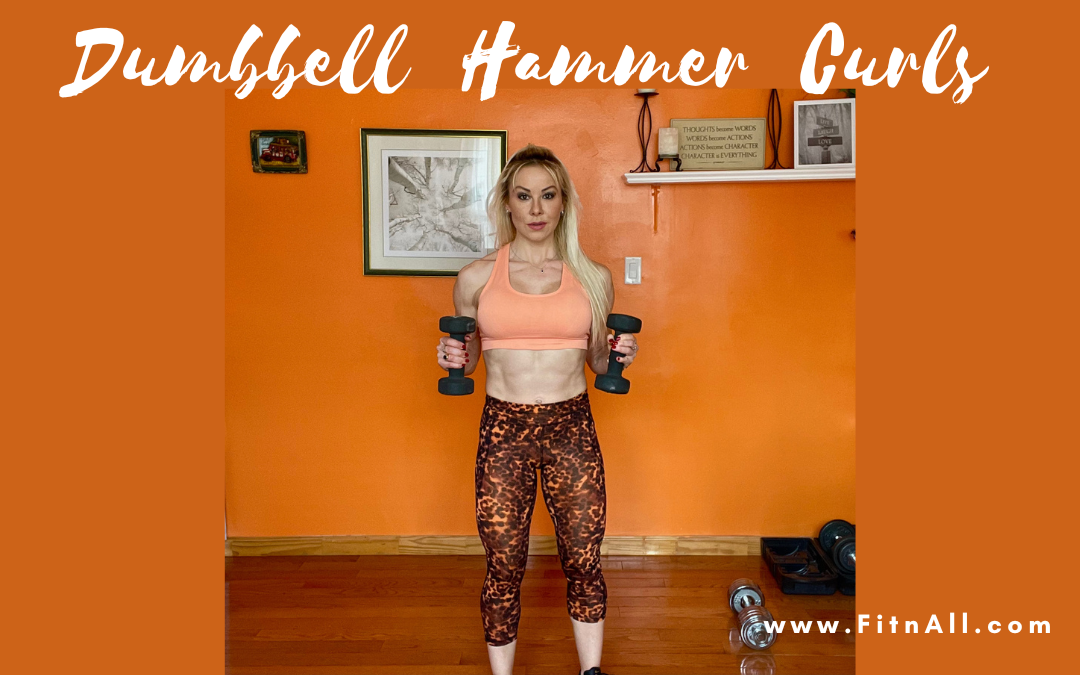Well-developed arms have always exemplified powerful physiques. In order to have strong and sculpted arms is important to train the biceps as well as the triceps. A great exercise to strengthen and sculpt the biceps, the front of the arms, is the dumbbell hammer curl.
Below we’ll look deeper into hammer curls and we’ll cover the following:
- Muscles involved in dumbbell hammer curls
- Benefits associated with hammer curls
- How to properly do dumbbell hammer curls
- Hammer curls’ modifications
- Common mistakes when performing dumbbell hammer curls
- Bicep exercises to complete your bicep workout
- Video on how to do dumbbell hammer curls
What Muscles Do Dumbbell Hammer Curls Work?
Primary muscles involved in dumbbell hammer curls:
- Biceps: The biceps brachii is the large muscle that lies on the anterior part of the upper arm between the shoulder and the elbow. It arises on the scapula and runs towards the upper forearm. The biceps muscle has two heads (the short head and the long head) – therefore its name. The biceps’ main function is to flex and supinates the elbow -allowing it to rotate so the palm faces up or forward. When the biceps contract, they pull up the forearm is pulled up.
Secondary muscles engaged:
- Brachialis: The brachialis muscle sits under the biceps brachii. This long muscle flexes your elbow. It connects your upper arm bone (humerus) to the long forearm bone (ulna).
- Brachioradialis: This muscle also sits in the anterior compartment of the upper arm. The brachioradialis muscle assists the brachialis with elbow flexion and connects your humerus bone to the short lower arm bone known as the radius.
- Wrist Extensors: These muscles are located along the forearm. They connect the upper arm bone (humerus) to your hand via your wrist and are involved in extending the wrists and fingers. Some of the wrist extensor muscles are the capri ulnaris, the digiti minimi, the digitorum, the indices, the pollicis brevis, and the retinaculum of the hand.
- Wrist Flexors: These muscles are also located along the forearm and connect your elbow to your hand. The wrist flexor muscles serve to flex the wrists and fingers. Your carpi radialis and carpi ulnaris flex your wrist up towards your forearm while you digitorum profundus and superficialis flexor muscles connect your forearm bone to the bones in your fingers, allowing them to curl.
- Deltoids: These muscles make up your shoulders. The wide part of the muscles attaches to your shoulder blade (scapula) and your collarbone (clavicle) before stretching down to your humerus bone. The anterior deltoid flexes and medially rotates the arm, the lateral deltoid abducts the arm, and the posterior deltoid extends and laterally rotates the arms.
Hammer Curls Benefits
After learning what muscles are involved in dumbbell hammer curls, let’s look at the benefits associated with the exercise:
- Hypertrophy: Hammer curls help increase bicep size.
- Strength & Endurance: Dumbbell hammer curls allow the muscle to be under tension for a longer period than when performing barbell bicep curls. This increases muscle endurance and makes your biceps stronger.
- Isolation: The hammer curl is a single-joint movement, making it great to isolate the biceps.
- Strong Wrists and Grip: Hammer curls improve wrist stability and strengthen your grip, much needed when lifting heavy and engaging in other compound moves.
- Safety: Another positive is that your wrists and elbows are less likely to be strained as it’s a more controlled movement.
- Aesthetics: Hammer curls help develop beautiful arms, which can translate into a great upper body.
- Simplicity: The Hammer Curl is a straightforward and simple movement. All you need is just a pair of dumbbells.
- Versatility: This is a versatile exercise. You can perform the exercise one arm at a time, both arms simultaneously, or alternating arms. You can even perform hammer curls with resistance bands or cables.
How to Do Dumbbell Hammer Curls

- Stand with your feet shoulder-width apart with your knees slightly bent
- Grab a pair of dumbbells and hold them with a neutral grip so that your palms face your body and the dumbbells hang down at your sides. The grip is what differentiates dumbbell bicep curls from hammer curls.
- Tight up your abdominal muscles, straighten your back, and move your shoulders backward.
- As you exhale, slowly flex at the elbows, and curl the weights up.
- Keep your upper arms steady and your elbows close to your body.
- Hold at the top of the movement for a second or two.
- As you inhale, lower the dumbbells to the initial position in a controlled manner.
- Repeat the movement for 8 to 12-15 repetitions and for 3 sets.
- You can work both arms simultaneously, one arm at a time, or alternating arms.
Avoid Hammer Curls Mistakes
Now that we know how to perform dumbbell hammer curls, let’s see what the most common mistakes associated with the exercise are:
- Moving the arms back and forth: Do not move your elbows and upper arms throughout the movement. Aim to maintain the arms steady.
- Rounding your back: Keep your back straight and engage your core. A straight back helps you maintain proper alignment and perform the exercise properly.
- Moving the weights fast: Don’t perform the movement fast to avoid momentum, move the weights in a controlled way. Slow down the repetition timing and squeeze every rep to isolate your biceps.
- Using very heavy weights: Do not use very heavy weights in order to avoid that other muscles, such as the core and back, help carry the load instead of the biceps. Lighter loads allow you to perform controlled reps with good form.
Dumbbell Hammer Curl Video
Bicep Workout
You can complete your bicep workout by performing the following exercises:
As you can see the dumbbell hammer curl is a wonderful bicep exercise. It offers tremendous benefits associated with hypertrophy, strength, endurance, and aesthetics. Now that you know how to properly perform dumbbell hammer curls, you can avoid the most common mistakes and enjoy their benefits. Remember, whether you want to lose weight, tone your body, or gain strength or size, all muscles must be trained.
Lift, Burn more Fat, Get Stronger, and Live Healthier!
To a Fitter Healthier You,
The Fitness Wellness Mentor



